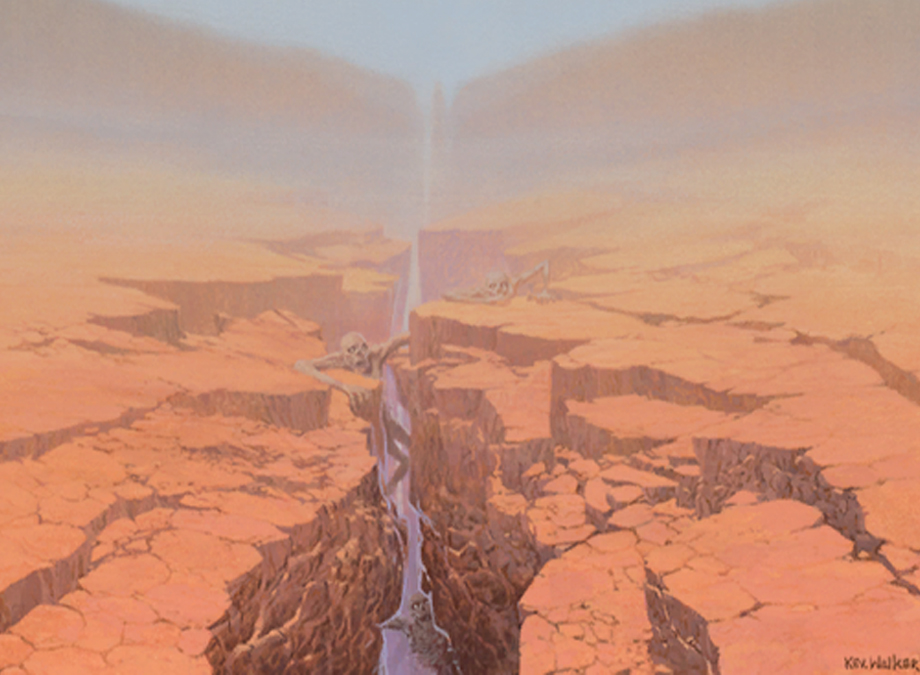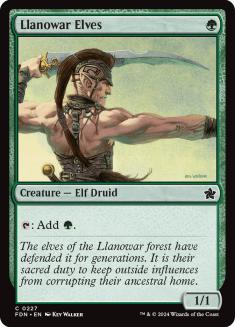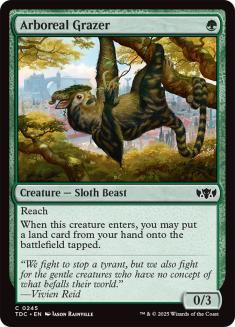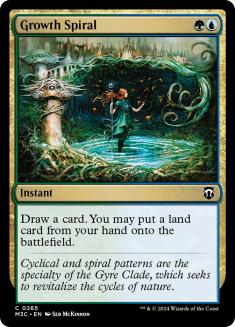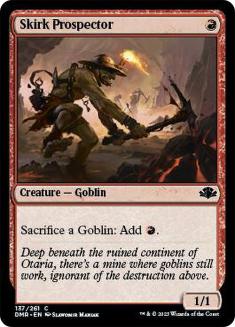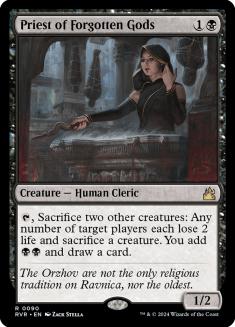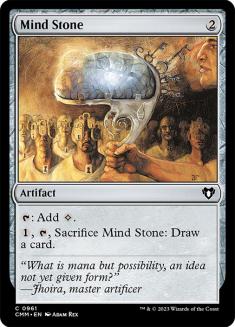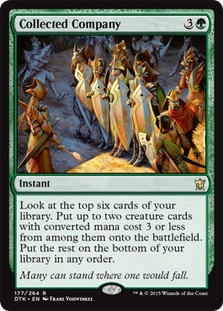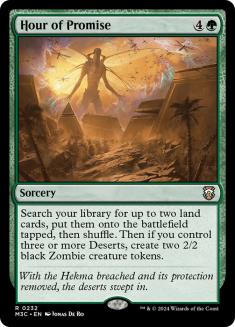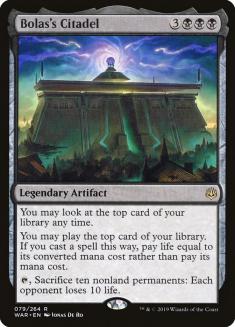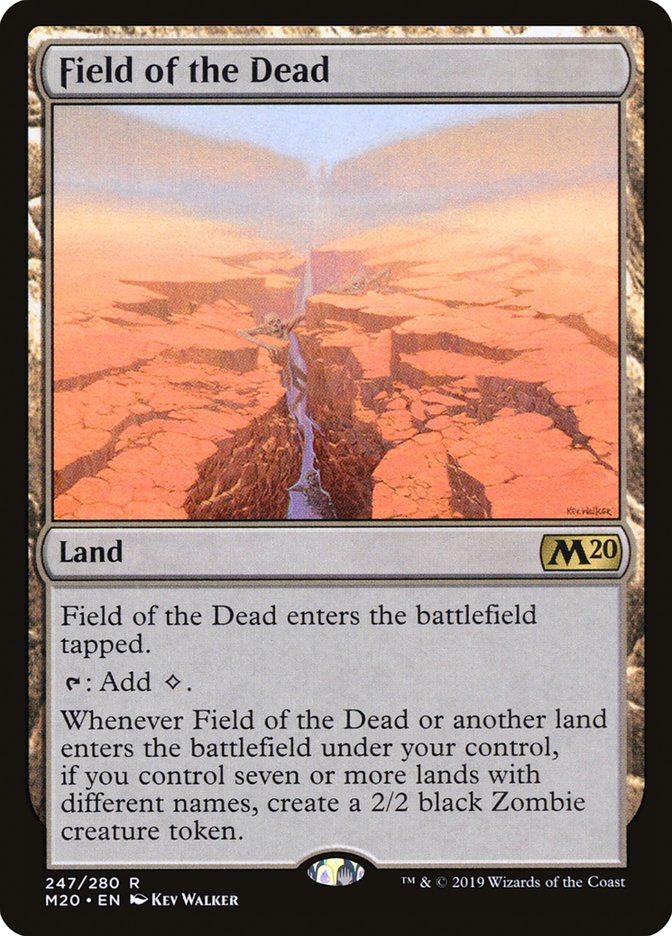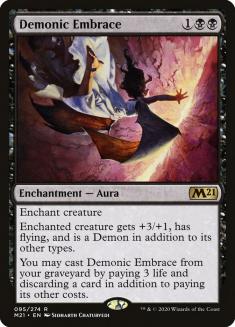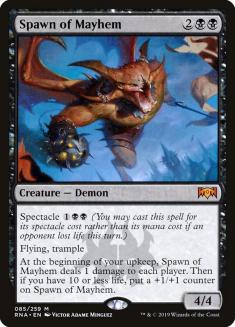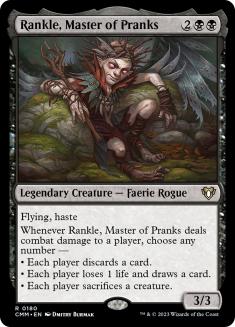There are a lot of different successful strategies and archetypes in Historic, but I’d argue that the format isn’t as strategically diverse as one might think. Most of the successful archetypes in Historic occupy similar strategic roles, and I’d like to explain how that’s dictated by the card pool.
My contention is that the only successful strategy in Historic is “Go Big.” What I mean by that is that all the decks are proactive and built to go over rather than under the opponent.
Let me explain where I’m coming from.
I copied Bant Field from @kuismatti on Twitter because I don’t think it’s reasonable to have Field of the Dead and Hour of Promise together in a format like this.
Creatures (9)
Planeswalkers (3)
Lands (32)
- 2 Forest
- 2 Plains
- 2 Island
- 1 Temple Garden
- 1 Breeding Pool
- 1 Hallowed Fountain
- 1 Glacial Fortress
- 1 Sunpetal Grove
- 1 Hinterland Harbor
- 1 Temple of Mystery
- 1 Temple of Enlightenment
- 1 Temple of Plenty
- 1 Radiant Fountain
- 1 Irrigated Farmland
- 1 Scattered Groves
- 1 Field of Ruin
- 1 Arch of Orazca
- 1 Blast Zone
- 4 Field of the Dead
- 3 Fabled Passage
- 1 Zagoth Triome
- 1 Ketria Triome
- 1 Raugrin Triome
- 1 Indatha Triome
Spells (16)

I don’t just pick up and play other people’s decks often enough, so I figured I’d start here and make changes as needed. I proceeded to advance from Platinum 4 to Diamond 2 in under eight hours on Arena. In that time, I was never tempted to change any cards. I played against a number of red and white aggressive decks, and it felt pretty clear that going under my ramp deck wasn’t a functional game plan. Looking at the rest of the format, I don’t think it’s functional against other decks either.
So why is it so hard out there for an aggro deck?
The big reason is the strength of the acceleration in the format. Aggressive creature decks rely on playing cheap creatures with high power, and dealing a lot of damage by getting several attacks in before the opponent can play their more expensive spells, but ramp spells rob the aggressive player of precious attack steps before something can turn the tide.
Green has a lot of options to start the game with three mana on the second turn if they’re playing a creature deck, but if you don’t want to rely on creatures, you still have great options.
Cards like this were once unreliable as acceleration because you wouldn’t always have a land to put on the battlefield, but now that it’s so easy to win the game just by playing more lands than your opponent (primarily thanks to Field of the Dead) we know that you can just play 28 or more lands and you’ll almost always have one.
Even if you’re not playing green, the format offers some great tools to get ahead on mana early.
The green acceleration is so strong that most people just play green, but even if you don’t, you can still cast expensive spells ahead of schedule.
I mentioned casting a spell that turns the tide, and that’s the other key component of reliably beating aggressive decks. Once you have mana, you need a play to reverse the course of the game. Amonkhet Remastered brought us some great tools and I’d like to call attention to the two strongest ways to take over the battlefield for four mana.
These are opposite approaches, but both negate an early lead the opponent may have acquired from casting creatures while you were playing mana acceleration, and both can be cast on Turn 3 with a single accelerator, which is early enough to ruin any aggressive strategy.
Finally, after these cards catch a player up, there’s no chance for the aggressive player to reestablish or to win the game through some kind of back door long game plan like burn spells, Experimental Frenzy, or even more laughably something like Castle Ardenvale because the big decks end the game so quickly.
These aren’t control decks that give you five turns after playing a sweeper to start over. These decks end the game.
On that subject, Why aren’t there control decks? If no one can go under the midrange decks, historically that means that control should be able to go over the top of them by countering their key spells.
Seriously, that’s it. It’s essentially impossible to play control against Field of the Dead. Even if Field of the Dead gets banned, there are still a lot of tools that make things hard for control decks.
Thoughtseize; Ulamog, the Ceaseless Hunger, Bolas’s Citadel
Thoughtseize is the best tool for midrange decks against control decks, allowing them to find and exploit a vulnerability in the control player’s draw. Varied threats that attack from unusual angles like Bolas’s Citadel require very specific answers, and Ulamog the Ceaseless Hunger offers a kind of inevitability that beats anyone who doesn’t have a real plan to end the game before it can get cast.
Playing aggressive Magic is out and reactive Magic is out. All that’s left are various proactive strategies that try to go bigger than each other.
While playing Bant Field, the deck I played against the most and the deck that looked the most impressive was Golgari/Jund Citadel. Thanks to Wrath of God and Grafidgger’s Cage, I was able to win more than I lost, but I died immediately every time they cast Bolas’s Citadel if I didn’t have a Grafdigger’s Cage on the battlefield.
Between my experience and what I’ve read on Twitter, I believe Bant Field and Golgari Citadel are the two best decks in Historic. I’ve only played against Jund Citadel, but after seeing the Golgari Explore list tweeted by Rodney Bedell, I believe that looks like the right way to build the deck. The explore creatures make it harder for aggressive decks to get under it and help dig for the important spells. Mayhem Devil has never seemed necessary.
Goblins is still around, but I think it’s behind against these decks, so I’m not really sure what the draw to playing it would be.
I do think there are other viable strategies that just haven’t been explored as well, so there’s a good chance that these won’t be the two best decks in a week, but I do think the best decks will continue to be big proactive decks.
Theoretically, the best foil to this kind of format where players can only afford to play a few reactive spells would be some kind of combo deck, and there are definitely options available in Historic. If I had a team working to break the format for a large tournament, I’d be trying to convince people to work on decks like Kethis Combo, God-Pharaoh’s Gift, and maybe even New Perspectives (with Lotus Field and Blood Sun), but I haven’t currently found a list of any of these that I think beat the best decks (I think you’re just asking for more things to come together to get the same result).
For players who like to attack with actual creature cards, I don’t think all hope is lost — I just think you need to go over or through, not under. Embercleave is a great option that has a place in this format (and Rampaging Ferocidon seems like a well positioned creature to pair it with). Outside of that, I think flying is great right now, since it allows you to ignore things like Zombie and Goat tokens.
Black aggro can embrace this and Rakdos can play these cards with Embercleave. I think black’s biggest weakness is the lack of a good two-drop. If it had something like Scrapheap Scrounger, Smuggler’s Copter, or Heart of Kiran, it would likely be one of the best decks.
Here’s an attempt at building a Rakdos deck that leans into the idea that it has to go big:
Creatures (26)
- 2 Hazoret the Fervent
- 3 Kitesail Freebooter
- 4 Rampaging Ferocidon
- 4 Rotting Regisaur
- 4 Knight of the Ebon Legion
- 1 Rankle, Master of Pranks
- 4 Robber of the Rich
- 4 Fervent Champion
Lands (24)
Spells (10)

This deck foregoes removal to prioritize Embercleave and generally ending the game, it’s basically built to goldfish as fast as possible assuming the opponent can usually chump block on the ground. This prioritizes its matchup against ramp decks at the cost of the matchup against Azorius Auras.
White or Azorius Auras is another great aggressive strategy because it’s a deck that kind of tries to go under opponents, but also just does the biggest thing in making a huge creature. I think it’s very worth playing blue to make the deck more evasive, and I think Cartouche of Knowledge seems like a really strong addition to the deck. This strategy fundamentally preys on the exact lack of interaction that characterizes Historic, so it’s a great strategic fit.
My dark horse picks for the decks that can potentially attack the format from a meaningfully different angle are Azorius Spirits/Flyers (possibly splashing Collected Company) and Mono-Blue Aggro. The aggression plus disruption strategy can potentially capitalize on the rewards of being able to counter the opponent’s key expensive spells without falling into the trap of not ending the game fast enough, and the flying mechanic means they can actually close games through the seas of blockers this format can generate. Their flash game also helps mitigate the strength of Wrath of God if they don’t have a counter available.
Historic is arguably in a healthier place than Standard, with a variety of strong strategies that look at play out very differently from each other. It’s hard to make the case that Bant Field, Golgari Citadel, and Azorius Auras are fundamentally the same deck — by all reasonable metrics, that’s an extremely diverse range of colors and strategies and any format would aspire to pillars like that. At the same time, I really do think they have some fundamental similarities that may not exactly lead to a homogeneous play experience, but at least make me very aware of what’s missing.
Ultimately, streaming and ladder play and the digital experience in general lead to an experience where players want games to end quickly. Honestly, from the perspective of a designer who’s aware of the goals of players these days, it would be a mistake to design products that didn’t lead to decks like this. So I can point out that Field of the Dead invalidates an entire range of possible strategies, but there’s a good chance that the game is just better off without those strategies present.
Where I once believed that Field of the Dead should be banned simply because it restricts the viable strategies in a format too much, I think I’m starting to realize that, regardless of the extent to which it was intentional, the pressure it creates is likely for the best for player experience. It’s still possible that it will need to get banned against because it’s just too strong with Hour of Promise, but that’s kind of a different issue.
Banning Field of the Dead wouldn’t change the fundamental structure of Historic, and honestly, I don’t think it can realistically be changed with bans, but more importantly, I don’t think it’s something they should try to change. Ultimately, I think players and designers need to approach the future of Magic with an understanding that the ideal length for a game of Magic is probably between five and eight turns, and it’s probably best if games that last more than ten turns are very rare.

